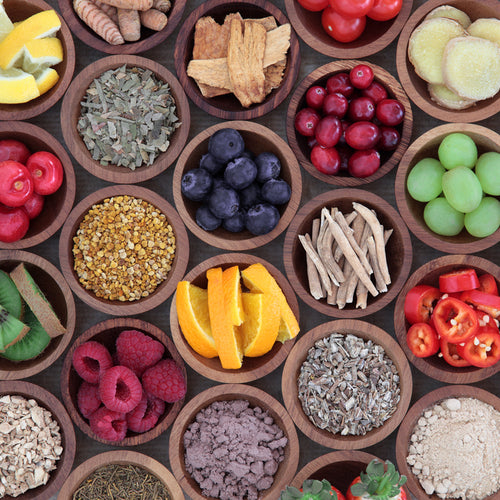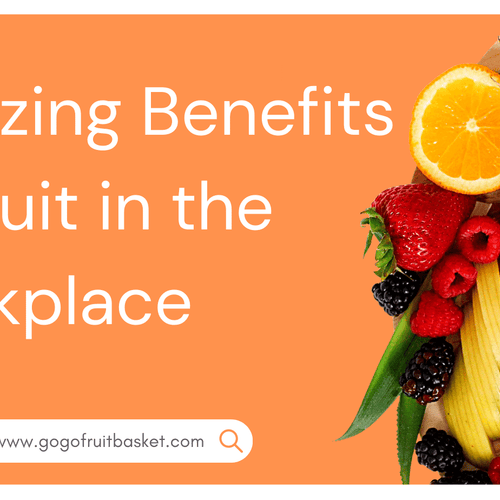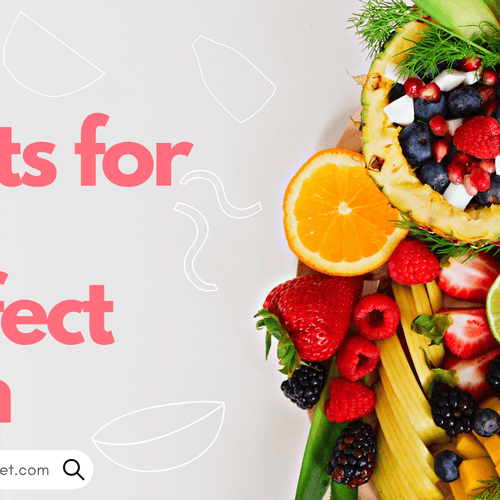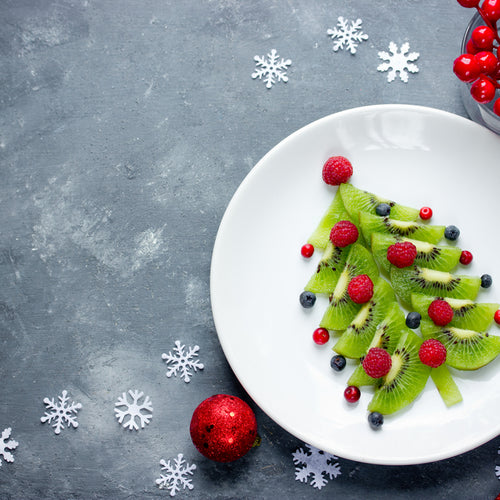Ever since the 80s, we’ve been hearing about getting our 5-a-day. There simply was one moment when all the researchers and specialists, backed up by the government considered people weren’t getting nearly as much fruit and vegetables as they should be. And they were completely right. Packaged, semi-cooked dinners, and fast food found at every single street corner made it extremely difficult for us to keep a healthy diet. We preferred hot dogs and hamburgers to apples and bananas simply because they were better tasting and a lot faster.
Now, however, we have something to show for it. Obesity reached a peak in the western world (the US and Western Europe as well), and more people than ever are dying because of heart diseases or suffering from diabetes, gout and other dietary related conditions. Actually, despite all the authorities’ efforts, studies show that the vast majority of people actually don’t eat the required 5-a-day, which is a very discouraging thought and a dangerous condition.
In order to meet the recommendations, most people need to at least double the amount of fruits and vegetables they eat every day, just to stay on track and reduce the risk of developing certain conditions. Of course, this will not suffice, as eating more veggies and fruits needs to be paired with consuming less sugary treats, soda, deep fried foods and casting away the sedentary life style.
However, most people have complained that it’s not very easy to introduce the 5-a-day into their diet, because they need to calculate how much they eat, because vegetables don’t taste as good as other fruits and because sweets are always preferred to fruits. Therefore, here is your complete guide to getting your 5-a-day, through which you will see it can actually be easy, tasty, cheap, and quick to switch from a very unhealthy diet to one rich in produce.
Contents
Why Is It Important to Eat More Fruits and Vegetables?. 2
What Does a Portion Mean and What Exactly Can You Eat?. 2
Tricks for Introducing More Veggies and Fruits into Your Diet. 3
#1. Go Exotic. 4
#2. Keep Up with Trends. 4
#3. Try New Things Every Week. 4
#4. Use Fruits and Veggies as Ingredients. 4
#5. Bring as Many People into this as You Can. 5
Easy Recipes for Getting Your Allotted 5-A-Day. 5
How to ‘5-A-Day’ On a Budget. 6
5-A-Day for the Whole Family. 7
#1. Seizing the Day’s Opportunities. 7
#2. Always Be On the Ready with Vegetables. 7
5-A-Day in Motion. 8
Why Is It Important to Eat More Fruits and Vegetables?
We all know that it’s very important to eat as much fruits and vegetables as possible but, sometimes, we take this type of thinking for granted. The meaning might be lost on us and we might just think it’s “healthy”, while the actual details still elude us. So, why is it important to eat fruits and vegetables?
First of all, fruits and vegetables have very high levels of vitamins and minerals, as well as a wide range of phytochemicals. These are some substances that occur naturally in plants and which are essential for the healthy functioning of the human body. Plants and veggies are also very high in antioxidants, which protect our bodies from harmful free radicals, usually found in pollutants that are the cause of many diseases we suffer from. This is why people whose diet is rich in produce have been proved to be less prone to a wide variety of serious diseases, such as: elevated blood pressure, heart disease, obesity, strokes, some types of cancer, such as mouth, throat, stomach, colon, and lung cancers.
A lot of studies have been conducted, showing that, for every portion of fruit and vegetables we eat, the protection goes up 40% when it comes to strokes and 20% when it comes to cancers. Apart from that, a healthy diet rich in veggies and fruits has been shown to delay the development of cataracts, reduce asthma symptoms, improve the normal functioning of the bowels, allow for better diabetes management, and improve the health of our bones. Apart from that, if all these weren’t reason enough, fruits and vegetables are extremely low in calories and very high in fiber, so they allow one to keep a healthy body weight.
What Does a Portion Mean and What Exactly Can You Eat?
Normally, as far as the official advice releases go, a portion consists of 80g of fruit and vegetable. But, that seemed to confuse many people, who started looking at choosing food at the supermarket as if it were a math problem they couldn’t figure out. So, here is what 80g of produce looks like:
- A single banana, orange, pear or apple. You can also have any other fruit you desire, as long as it’s of the same size. Take into consideration some fruits are considerably smaller after they are peeled, like melon or pomelo;
- Half a large grapefruit or half an avocado;
- A slice of melon or pineapple. Be aware that these two have high sugar contents as far as fruits are concerned;
- Two satsumas, tangerines, plums, or other fruits that are small in size such as these;
- A handful of grapes, cherries, or berries;
- One tablespoon, preferably heaped, of dried fruits, such as raisins, dates, or apricots;
- Three heaped tablespoons of canned fruits, fresh or in fruit juice;
- Three tablespoons of stewed fruit;
- Three heaped tablespoons of vegetables whether they are raw, cooked, canned, or frozen;
- Three heaped tablespoons of beans, lentils or peas. Keep in mind that no matter how much of these you eat, it still counts as one of the 5-a-day you have to eat;
- One small bowl of salad.
Regarding what exactly you can eat, there have always been questions and uncertainties, sprouting from the many shapes and varieties fruits and vegetables come nowadays. Apart from fresh, we can find them dried, canned, or frozen and people have always wondered if these count too when it comes to getting your 5-a-day. And the answer is yes. Fruits and vegetables can be in any shape, size or condition you want, as long as you eat them.
Actually, there are certain studies that have shown how frozen items are better than the fresh. The reasoning behind this is that, while the fresh take a long time on the way from their native lands to the shelves in your local supermarket and, thusly, tend to wilt, sit in the sunlight or in the cold for too long, the frozen have been iced immediately after they were picked. Consequently, all their vitamins and nutrients have been preserved completely.
Another debate and source of many questions has been the difference between shelved and organic produce. People wondered whether getting your 5-a-day actually meant eating organic fruits and vegetables and so making sure they are as healthy as possible. The answer to this one is somewhere in between. Indeed, eating organic fruits and vegetables is always the recommended option. They are grown in far better environments, out in the open, are exposed to direct sunlight, as well as rain, they are not treated with any growth or protection chemicals that alter their healthy status and they aren’t subject to any genetic manipulation, in order to come out as big and as uniform as possible. However, organic fruits and vegetables can be difficult to introduce into your daily diet, first of all because they are a bit harder to find, and second of all because they tend to be pricier. While the organic ones are, indeed the preferred choice, shelf produce is also good. The important thing is to remember to eat fruits and vegetables, no matter what.
Tricks for Introducing More Veggies and Fruits into Your Diet
Eating more greens can, sometimes, be difficult. When confronted with a choice, we will always spring for the doughnuts, the pizza or the ice-cream, rather than the apple or the pear. It’s a burden at times to keep a healthy diet, when all over the place you see places where you could just go in and have a huge, chocolate muffin with your coffee, or a big pasta lunch.
This is why we need some tricks to ease fruits and vegetables in our lives, in a way we won’t even notice. Here are some of them:
#1. Go Exotic
One of the best ways in which you can eat more fruits, for example, without feeling pressed to do it or resenting it, is by taking a break from the ordinary. This means stay away from apples, pears, plums, oranges, and bananas for a while and move into more exotic realms. Here are some examples of what you could eat:
- rambutan – this piece of fruit is so incredibly sweet, it will satisfy your sweet tooth in a heartbeat, no calories and no sugar added;
- the star fruit – is golden yellow and it’s not really exotic, because it grows in the western world too, but it’s deliciously sweet and crunchy;
- mangosteen – looks deliciously weird and tastes like orange mixed with peach; durian – if you’re really brave;
- Dragon fruit – probably one of the best fruits you will ever taste, it comes from a cactus, is a mix between pears and strawberries, and has a delicious creamy inside.
#2. Keep Up with Trends
This is a more like a psychological trick, but it works nonetheless. Find out which fruits and vegetables are in trend at the moment and start using those in your meals. For example, the past seasons, vegetables such as purple sprouting broccoli, kale, fiddleheads, purple carrots, and romanesco cauliflower have been in trend. Everybody was eating them, posting the results and process on social networks and this is one social trend you are most welcomed to adhere to. Start eating these magnificent fashionable veggies now and tweet your way around it.
#3. Try New Things Every Week
Another way of going green is by keeping things interesting and making sure you stay away from the routine. This is why you should try something new every week. Don’t stick to same salads you always have or to the same smoothies. Instead, try new combinations all the time, add fancy ingredients, exotic spices, and make it an experience you are actually looking forward to. Adding some dried basil or lavender to your ordinary fruit salad dessert, for example, will make it a European dream that you will be thinking about all day.
#4. Use Fruits and Veggies as Ingredients
This does not mean just in meals or salads, like adding a side of potatoes to your lunch or cooking with more leak. This means sneaking them into recipes. For example, make pumpkin cupcakes and double the amount of fresh pumpkin you use. Or, if you’re a fan of bread and simply cannot let a meal pass without having it, add some zucchinis (courgette) to it. Also, when you’re making chili, you can add some extra ingredients, like carrots and peppers; or, instead of French fries, try the delicious zucchini (courgette) fries. You can also try switching to vegetarian versions of everyday meals, like soups, for example. The whole idea behind this trick is to literally sneak some vegetables into your normal meals, so that you don’t notice they’re there or that you can’t taste them if you don’t like vegetables at all.

#5. Bring as Many People into this as You Can
Sharing is caring, but having someone to be there through your cleansing process and dietary changes is even better. So, another great idea to make yourself get your 5-a-day is to bring into it your friends, family and colleagues. At home, try cooking more meals based on vegetables, and introducing more fruit instead of regular desserts. At work, you can bring your own lunch instead of ordering pizza and fast food and. Also, you can ask around in the office and see who wants to chip in for a fruit and vegetable basket for smoothies. They are large baskets of fresh produce, that come directly to your office, in delicious combinations, which will make smoothie time a delight and which change every week, to ensure you diversity and awesome drinks. Set up a plan with your colleagues and make a certain smoothie the star of each week:
- first week it’s banana, pineapple, and mango, heading the smoothie division;
- next one is tomato, avocado, and green peppers, for a veggie twist;
- third week you can choose the apple, banana and mint combination and so on.
Easy Recipes for Getting Your Allotted 5-A-Day
Cooking with vegetables is, most of the times, seen as boring and difficult, because most vegetables take a long time to cook and they don’t even come out as tasty as one would hope for. It doesn’t have to be like that, though. You can change the way you cook and give up heavy meals, based on vegetables boiled for hours and heavy sauces to cover them up. You can switch to light and very easily prepared meals that contain a lot more fruits and vegetables than before. Here are some examples:
- Baked beans on toast – is super quick, very filling and low in calories, because beans have very high protein content. You can replace the beans with lentils or peas and top everything off with a tomato slice for extra flavor.
- Sun-dried tomato, spinach, and quinoa salad– this is a great way of introducing quinoa into your diet, in this lovely summer salad. The spinach and the delicious sun-dried tomatoes will count for two portions of your 5-a-day requirements.
- Cereal mixed with a banana – adding a sliced banana to your morning cereal is a perfect way of starting the day with high protein levels and it’s delicious as well, not to mention simple and quick.
- Cream soup – whether you make this at home or buy it, this is definitely one of the easiest ways of getting the vegetables you need. It comes in a huge variety, so it’s almost impossible to not find one to your liking. From thick onion soup to refreshing tomato, soups are filling and low in calories. However, remember to not add too much cream to them, otherwise they won’t serve their purpose anymore.
- Buffalo Lentil “Meatball” Sandwich – another great way of packing not one, but two portions in your daily eating schedule. With this amazingly delicious recipe you get the benefits of the lentils and the benefits of the salad that accompanies the “meatballs”.
- Lamb and vegetable kebab – this is one recipe that fits perfectly with the idea of “sneaking” vegetables into your meals every day. Between the pieces of meat, skewer as many pieces of vegetables as you can. The grill will make them taste even and nice and you won’t feel like you’re eating vegetables at all.
How to ‘5-A-Day’ On a Budget

Sometimes getting fresh fruit and vegetables is difficult because of their prices. Variety and quality are challenges as well, for the same reasons. Therefore, if spending a lot of money is not an option for you, there are still ways in which you can keep up with the 5-a-day plan.
- Buy fruits and vegetables that are loose, rather than the packaged ones. There is absolutely no point if paying for packaging when it comes to fruits or veggies, except if you’re sending someone a present in the shape of a fruit basket, which needs to be as pretty and presentable as possible. Otherwise, stick to loose fruit.
- Buy the items that are in season, because that’s when they are cheapest. Buying cherries in February, for example, is going to cost a small fortune.
- Visit your local small shops or even farmer’s market, instead of going to the supermarket. You’ll get goodies at producer prices and they might even make some discounts for you or throw in a couple more apples.
- Never throw away those pieces that are about to go bad. Instead, make something out of them, like a bit of jam, a soup, a pie or a casserole.
- Use the frozen variety of more expensive greens, such as asparagus, for example. They tend to be much cheaper.
- Replace ready-cooked meals with home cooked ones. They are much cheaper, a lot healthier and will add-up to your 5-a-day count very easily.
- Replace your daily snacks with fruits and vegetables. Not only will you eat more of those and accomplish your 5-a-day plan, but you will also save a lot of money. Fruit is considerably cheaper than any candy bar, chocolate or biscuits package you might get at the store.
- Keep an eye out for supermarket deals. They usually drop prices on fruits and vegetables as much as 80%, when they are a few days from going bad or they pair them off in “buy 1 get 1 free” types of deals.
5-A-Day for the Whole Family
As mentioned before, it’s a lot easier and more fun to make these changes in your daily diet accompanied by someone than alone. And your family comes first. Apart from that, if you change your diet, you should change theirs as well, in order to care for their health and well-being. This is particularly mandatory if you have children. They cannot ensure the 5-a-day for themselves and you can’t always rely on schools to provide the necessary fruits and vegetables. Therefore, it’s your responsibility, as a parent, to find a way of making them eat the much needed produce. Specialists recommend two ways of doing this:
#1. Seizing the Day’s Opportunities – this means introducing vegetables into children’s diet every chance you get, with every meal and every snack-time. Start off with breakfast time. You can either make it a cereal one, to which you can add fresh, dried, or canned fruit, or you can cook a breakfast. Recipes such as grilled mushrooms, baked beans, and fried tomatoes, coupled with a small glass of orange juice will assure one or two of their 5-a-day plan parts. Remember not to give kids too much fresh fruit juice, because it ruins their teeth.
After breakfast, the next opportunity you get is the morning break at school. Smaller children receive their piece of fruit or vegetable from school but, as far as older students are concerned, you can pack some with their lunch. This brings us to lunchtime at school. You can either cook a meal with vegetables for them or pack some fresh ones on the side, such as carrots, celery sticks, seedless grapes, cucumbers or cherry tomatoes. Instead of a desert, pack some dried fruit for them, such as sultanas, apricots, dates or figs. Keep in mind that children tend to swap their lunches at school, so talk to the other parents and make sure your child receives some fruit or vegetables, even if he swaps his.
Your next opportunity is the way home from school, when kids are usually very hungry, which creates a great opportunity for you to give them fresh fruit, because they will take it, no questions asked. Make sure they don’t get any sweets or sodas until dinner time. About this particular meal of the day, you need to get in the habit of making and keeping two types of vegetables on the table. This increases your chances of at least one of them being eaten.
#2. Always Be On the Ready with Vegetables
This means having a plan and keeping to it, because it’s a lot easier to stick to the 5-a-day when you’re prepared. Here are a few tips on how to do that:
- Make the fruits and vegetables very easy to reach. And that means literally, because, usually, when they’re hungry or tired, kids reach for whatever’s closest to them, so make everything reachable by hand.
- Arrange small fruit bowls everywhere in the house. Some may contain fresh fruit, while other dried fruits and nuts. The simple sight and abundant availability will make children turn to them rather than raiding the fridge or the pantry.
- Always have some fresh fruit and vegetables washed and cut up into pieces for when the kids ask for a snack. This means pieces of carrots, sticks of celery, apple slices, peeled oranges and kiwis and pineapple rings.
- Plan ahead for family days out, because these are a major time for snacking. Kids will be running around all day, getting tired and asking for treats all the time. This doesn’t mean you have to limit them solely at veggies and fruits, but you can combine them with sweets and still increase their daily intake.
- Refrain from eating sweets and drinking sodas yourself while at home with the children. It will be difficult to explain to them why they have to eat celery while you munch on chocolate.
5-A-Day in Motion
People often find excuses for not eating sufficient fruits and vegetables. One of their favorite is that they don’t have time or that they are very busy and always running around doing different things that keep them from eating healthy. However, working late, travelling often, and running errands should not keep you from a healthy lifestyle.
The first thing you have to do is to actually change your perspective on things. Getting rid of the idea that you have to eat fast-food when leading a fast life style, means you already won half the battle. So, start by changing the way you look at things. Leading such a life normally means eating out a lot, going for take-out or ordering meals.
Therefore, one way of improving all this, so that you can make sure you get your 5-a-day is by asking yourself the following question: what can I do to add more veggies or fruits to this meal? The answer can be very easy. If you’re in a restaurant, apart from your meal, also order the garden salad or small soup. If at home with take-out, open a small can of sweet corn or beets on the side. You can do this even if you’re in such a hurry that you order your breakfast in. Simply ask them to add extra tomatoes or mushrooms to your omelette. As far as snacks go, carry around ready-made carrot or celery sticks, dried fruit, bananas or sultanas. If you’re thinking about buying a sandwich, ask them to double the quantity of salad, tomatoes or avocados in it. The same goes for when ordering pizza. Ask them to replace if not all, then at least some of the pepperoni with extra mushrooms and add veggies to it, like kale, spinach, broccoli or cauliflower. When baked in the oven, these last two are delicious.
You do have to keep in mind that asking for extra vegetables with your every meal only works if they are steamed, poached, baked or grilled. Deep fried vegetables count too as far as the 5-a-day plan is concerned, but not as much. Studies have shown that vegetables lose most of their qualities when fried in hot oil. Apart from that, the number of calories goes through the roof, even if we are talking about veggies. As we all know, deep fried foods are very bad for the general health and veggies make no exception.
The 5-a-day campaign is now called the Fruits & Veggies – More Matters campaign and it is a public health initiative from the Produce for Better Health Foundation and Centers for Disease Control and Prevention, otherwise known as the CDC. It’s a very detailed program that offers advice to people about their fruit and vegetable intake depending on their needs. That is why their recommendations vary from 4 to 13 portions a day.
Also, their studies have shown that changing things for the better, as far as dietary practices go, calls for a sustained effort. As we are all coming to realize more and more, most people actually do not have healthy eating habits, which could have disastrous consequences. A consumer website dedicated to the 5-a-day rule was launched in 2007 and it was dedicated to educating Gen X moms about their campaigns and how important a healthy and balanced diet is. It’s a very comprehensive and exhaustive website, that houses everything, from hundreds of videos and tutorials, to recipes, meal plans, storage methods, checking for ripeness and many more tabs with interesting info.
They also make use of the Food Pyramid, which clearly shows how fruits and vegetables are at the very basis, the biggest and most important step of the pyramid. They are there to remind us that fruits and vegetables really are the building blocks of a healthy life style, the foundation on which a disease free existence is based on.






